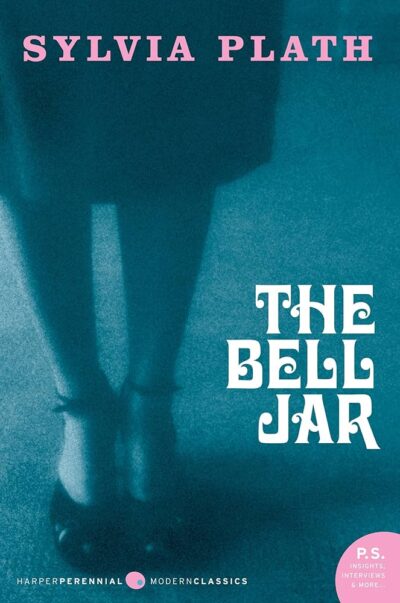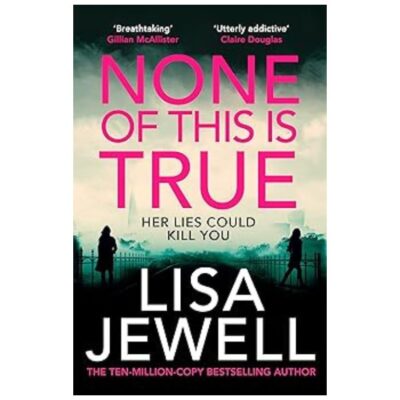For this assignment, I had two goals when it came to picking my book. 1. Avoid identification at all costs, and 2. No yellow cover (I technically did listen to an audiobook version for part of this book, and it did have a yellow cover. I cannot escape it). I took a look at the books on the cart in the corner of my room that I haven’t read yet and I knew there was only one correct choice: The Strange Case of Dr. Jekyll and Mr. Hyde.
My Experience
I think everyone knows the story of Jekyll and Hyde. I know that I did before I picked up but actual book. And maybe that’s a bit generous, because I didn’t actually know anything about how the story was going to be written or play out. But I did know the very general plot. The story is referenced so often in popular culture that everyone knows the basics; people have two sides to them. The side they show the world, and the side they don’t. The better side and the worse side.
I had this really strange experience going on while reading this story of knowing the plot, at least somewhat, but not knowing the ending or the details. I don’t know exactly what to call this. Maybe in a way it was superiority. Throughout the book the main protagonist, a lawyer called Mr. Utterson, struggles to understand the connection between Dr. Jekyll and Mr. Hyde. Utterson goes to speak with Hyde after hearing a story about him, and thinks this after the encounter:
“There is something more, if I could find a name for it. God bless me, the man seems hardly human! Something troglodytic, shall we say? or can it be the old story of Dr. Fell? or is it the mere radiance of a foul soul that thus transpires through, and transfigures, its clay continent? The last, I think; for, O my poor old Harry Jekyll, if ever I read Satan’s signature upon a face, it is on that of your new friend.”
Viewing his friend Jekyll as very respectable, he cannot understand why he has such a close relationship with Hyde. Jekyll has written Hyde into his will, and given him a key to his home. Utterson is truly confuse by this as believes Hyde to be an embodiment of evil. I looked at Utterson’s confusion with an air of superiority. Because I already knew that Jekyll and Hyde were one and the same, I thought it was an extreme oversight of him not to realize this truth.
But then, I had this other experience where I tried to put myself into the shoes of someone who didn’t know the plot. Perhaps, of someone who read this story closer to when it was first published and hadn’t had the chance to see it spoiled by pop media references. When looking at it through that lens, I realized that of course, Utterson didn’t know. That is the point. When Hyde comes out, he is unrecognizable. His face and body is changed. This isn’t a story about mere dissociative identities. Jekyll and Hyde don’t look the same! Hindsight is 20/20, but if I was reading this book for the first time with no prior knowledge, I wouldn’t have known any better than Utterson did! What do I call this experience? Where I re-evaluated my own perspective, flipped it around, tried to put myself somewhere else? I really do not know. I think there was certainly an element of confusion, but that wasn’t the experience.
If I remind myself to read through the lens of someone who has never heard the tale before, I can understand (even if not fully feel for myself) some experiences that were likely more intentional for this gothic horror. I can understand the distress and paranoia that this story may induce as readers learn of this evil man who has worked his way into the life of a good doctor.
As I continued reading, I discovered things I didn’t know about the story. I never knew that the transformation from Jekyll to Hyde was caused intentionally by type of potion. At the beginning of the book, I was wondering about the vastly different physical descriptions of the “two men.” Knowing the bare bones, “split personality” plot of the story, I had just assumed that the evil persona came out sometimes, and the physical manifestation of Hyde was just some metaphor for the face of evil, rather than an actual transformation. Again, this was interesting because I went into the book knowing that Jekyll was Hyde! So I was theorizing on something I shouldn’t have even known yet, but it was exciting to still have something to wonder about. The point is, I was still able to experience the paranoia of this unknown.
Narrative Technologies
Identifying narrative technologies that led to my experience is difficult. I think that’s because, to be fair, Robert Louis Stevenson didn’t intend for me to know the plot. He didn’t intend for every movie and TV show to spoil the big reveal of his story (though I am sure it’s lasting popularity would not disappoint).
Stevenson did certainly make narrative choices that helped create his mystery, and I think that they are very effective. Like I’ve said, I didn’t see through the story because of anything the author did. He kept the big reveal under-wraps well! The icon of Jekyll and Hyde isn’t his fault (it definitely is, he’s the one who wrote such an iconic story). Stevenson writes a very good mystery through the use of suspense. Little bits of the puzzle fall into place at a time, so by the time the full picture is revealed, the reader is struck with an altogether satisfying “aha” moment. At the start of the book, Utterson hears this story about an evil man who tramples a young girl in the street:
I was coming home from some place at the end of the world, about three o’clock of a black winter morning, and my way lay through a part of town where there was literally nothing to be seen but lamps. Street after street and all the folks asleep-street after street, all lighted up as if for a procession and all as empty as a church— till at last 1 got into that state of mind when a man listens and listens and begins to long for the sight of a policeman. All at once, I saw two figures: one a little man who was stumping along eastward at a good walk, and the other a girl of maybe eight or ten who was running as hard as she was able down a cross street. Well, sir, the two ran into one another naturally enough at the corner; and then came the horrible part of the thing; for the man trampled calmly over the child’s body and left her screaming on the ground. It sounds nothing to hear, but it was hellish to see. It wasn’t like a man; it was like some damned Juggernaut.
Pg. 9
I read on about this story for pages and pages, and for some reason I wasn’t putting it together that this evil man was Hyde. So I kept reading, in total suspense waiting for the reveal. Then, the evil man walks into a house, which the narrator of the story knows to be someone else’s, and gives the girl’s family a check, signed by…someone else. Some man much more respectable than the aforementioned Juggernaut. At this point, I’m starting to catch on, but still doubting myself, because no names have been confirmed. So I am reading and reading, suspense building! Until finally,
“But for all that,” continued the lawyer, “there’s one point I want to ask: I want to ask the name of that man who walked over the child.”
“Well,” said Mr. Enfield, “I can’t see what harm it would do. It was a man of the name of Hyde.”
Pg. 13
He also of course makes great use of the plot-twist technology. The whole story is a plot-twist! From learning who Hyde really is, and in turn, who Jekyll really is (because since Hyde is Jekyll, Jekyll is really not the great guy society has thought him to be) to learning how Jekyll had been not only allowing, but forcing this monster to come out. Jekyll reveals his secret to his friend, Lanyon, by transforming from Hyde to himself in front of him:
He put the glass to his lips and drank at one gulp. A cry followed; he reeled, staggered, clutched at the table and held on, staring with injected eyes, gasping with open mouth; and as I looked there came, I thought, a change he seemed to swell— his face became suddenly black and the features seemed to melt and alter—and the next moment, I had sprung to my feet and leaped back against the wall, my arms raised to shield me from that prodigy, my mind submerged in terror.
“O God!” I screamed, and “O God!” again and again; for there before my eyes—-pale and shaken, and half fainting, and groping before him with his hands, like a man restored from death—there stood Henry Jekyll!
Pg. 88
This was my big plot-twist of the story. A potion? The change is physical, and it’s purposeful? I was enthralled, I was intrigued, I was disgusted. Jekyll wants to hurt people, and he is going to great lengths to make sure he can with no repercussions! Finally, I was glad that I was able to be taken by surprise by this story, just as others who had read long before me were.
The Strange Case of Dr. Jekyll and Mr. Hyde is definitely a tough choice for this assignment, but it’s also a really interesting study into the idea that even if already know the plot or ending of something, you can still experience it. You can just experience it organically, or you can try on some different perspective hats and see what you experience with those, and nothing is wrong. And even if you know some parts of the story already, there are probably going to be some surprises waiting for you!
Works Cited
Stevenson, Robert Louis, 1850-1894. The Strange Case of Dr. Jekyll and Mr. Hyde. London :New English Library, 1974.
Featured Image
Cover of “The Strange Case of Dr. Jekyll and Mr. Hyde” by Robert Louis Stevenson.




